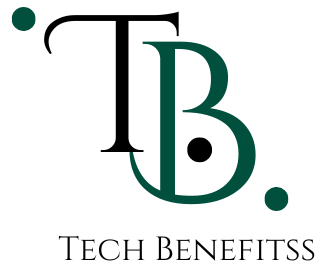I. Introduction
A. Unveiling ISO 9001
The International Organization for Standardization (ISO) introduced ISO 9001 Lead Auditor Course as the globally recognized benchmark for quality management systems. Established in 1987, this standard outlines a framework for organizations to institute, execute, uphold, and consistently enhance efficient quality management processes. The core tenets include unwavering customer focus, a process-oriented approach, and an unwavering commitment to continuous improvement.
ISO 9001 Lead Auditor Course universally applicable, underscoring the significance of meeting customer needs, elevating satisfaction, and perpetually delivering products or services that meet or surpass expectations. Its adoption signals a company’s allegiance to quality, granting a competitive edge and optimizing operational efficiency.
B. Significance of ISO 9001 Lead Auditor Course Certification
ISO 9001 Lead Auditor Course certification is more than a mere emblem; it attests to an organization’s dedication to quality and customer contentment. Attaining this certification signifies the successful implementation of a robust quality management system aligned with international standards. Beyond external recognition, certification yields internal benefits, streamlining processes, identifying inefficiencies, and fostering a culture of continual improvement.
C. The Lead Auditor’s Role in Quality Management
In the realm of ISO 9001, a Lead Auditor plays a pivotal role in ensuring an organization’s quality management system aligns with the standard. They plan, conduct, and report on audits to gauge system effectiveness and compliance. Beyond mere compliance, Lead Auditors actively contribute to enhancing organizational processes and performance.
II. Decoding the ISO 9001 Lead Auditor Course
A. Course Objectives and Scope
- Comprehensive Understanding: Equip participants with a thorough grasp of the ISO 9001 Lead Auditor Course standard, its principles, and the prerequisites for a successful quality management system.
- Audit Leadership Skills: Cultivate leadership skills essential for guiding audit teams through the entire auditing process, from planning to reporting and follow-up.
- Practical Application: Enable participants to apply theoretical knowledge in real-world scenarios through case studies and practical exercises, fostering a hands-on approach to auditing.
- Risk-Based Thinking: Emphasize the importance of risk-based thinking in auditing, helping participants identify and address potential risks to the quality management system.
- Communication Skills: Enhance communication skills for effective interaction with auditees, team members, and stakeholders, emphasizing clear and constructive communication throughout the audit process.
B. Prerequisites for Participants
- Familiarity with ISO 9001: Basic understanding of the ISO 9001 Lead Auditor Course standard and its key principles.
- Experience in Quality Management: Practical experience working with or managing quality management systems.
- Educational Background: Background in a relevant field such as quality management, engineering, or a related discipline.
- Audit Experience: While not mandatory, prior experience in conducting audits or participating in audit teams can be advantageous.
C. Duration and Format of the Course
The ISO 9001 Lead Auditor Course offers a comprehensive learning experience within a defined timeframe. The duration varies but often ranges from several days to a week. Formats include in-person training, online courses, and blended learning, catering to diverse learning styles and preferences.
III. Key Components of the ISO 9001 Lead Auditor Course Standard
A. Overview of ISO 9001:2015
The ISO 9001:2015 standard, last revised in 2015, forms the foundation for quality management systems globally. It focuses on a process-oriented approach, encouraging organizations to view their operations as interconnected processes working towards delivering quality products or services.
B. Quality Management Principles
Guided by quality management principles, including customer focus, leadership, engagement of people, process approach, improvement, evidence-based decision-making, and relationship management, ISO 9001 Lead Auditor Course certification is crucial for organizations establishing and maintaining effective quality management systems.
C. Structure of the Standard
Following the High-Level Structure (HLS), the ISO 9001 Lead Auditor Course standard consists of ten clauses addressing specific aspects of quality management. Understanding this structure is essential for auditors to navigate and assess compliance effectively.
IV. Roles and Responsibilities of a Lead Auditor
A. Leading Audit Teams
- Team Formation: Assembling a competent and diverse audit team.
- Clear Communication: Effectively communicating the audit plan, objectives, and expectations.
- Role Allocation: Assigning specific roles and responsibilities to team members.
- Motivation and Guidance: Providing motivation and guidance throughout the audit process.
- Conflict Resolution: Addressing conflicts within the audit team.
B. Conducting Effective Audits
- Audit Planning: Developing a comprehensive audit plan.
- Risk-Based Approach: Identifying and prioritizing critical audit areas.
- Thorough Examination: Assessing conformity with ISO 9001 Lead Auditor Course requirements.
- Interview Techniques: Utilizing effective interviewing techniques.
- Objective Evaluation: Objectively evaluating evidence to determine system effectiveness.
C. Reporting and Follow-Up
- Audit Reporting: Preparing a clear and concise audit report.
- Communication of Results: Effectively communicating results to stakeholders.
- Corrective Actions: Collaborating on corrective actions.
- Follow-Up Audits: Verifying implementation and effectiveness of corrective actions.
- Continuous Improvement: Providing feedback for continuous improvement.
V. Developing Audit Skills
A. Risk-Based Thinking in Auditing
- Understanding Risk-Based Thinking: Definition and significance.
- Integration with ISO 9001:2015: Linkage between risk assessment and strategic decision-making.
- Risk Identification and Assessment: Techniques for identifying and assessing risks.
- Incorporating Risk into Audit Planning: Integrating risk considerations into the audit planning process.
- Continuous Improvement through Risk Analysis: Utilizing risk data for continual improvement.
B. Interviewing Techniques
- Effective Communication Skills: Importance of clear communication during interviews.
- Questioning Strategies: Formulating open-ended and probing questions.
- Building Rapport: Establishing a positive atmosphere during interviews.
- Handling Difficult Situations: Addressing resistance or defensiveness.
- Documentation of Interview Findings: Properly recording and documenting information.
C. Documenting Findings
- Comprehensive Documentation Practices: Importance of thorough and accurate documentation.
- Non-Conformity Identification: Defining and documenting non-conformities.
- Root Cause Analysis: Techniques for determining root causes.
- Clear and Concise Reporting: Translating findings into a clear audit report.
- Follow-Up Documentation: Documenting follow-up actions and measures.
VI. Case Studies and Practical Exercises
A. Real-world Scenarios
- Introduction to Real-world Scenarios: Exposing participants to actual organizational challenges.
- Case Studies: Presenting real-world cases from various industries.
- Discussion and Analysis: Facilitating group discussions on case studies.
B. Hands-on Application of Audit Principles
- Practical Exercises Overview: Importance of hands-on application in reinforcing audit principles.
- Simulated Audits: Conducting mock audits for a realistic experience.
- Feedback and Evaluation: Providing constructive feedback for improvement.
VII. Preparing for the ISO 9001 Lead Auditor Exam
A. Exam Format
- Multiple-Choice Questions: Assessing knowledge and comprehension.
- Scenario-Based Questions: Evaluating practical application.
- Time Management: Strategies for efficient time utilization.
B. Study Resources
- Course Materials: Leveraging provided course materials.
- Reference Materials: Utilizing ISO 9001:2015 and related resources.
- Mock Exams: Practicing with mock exams for familiarity.
C. Tips for Success
- Effective Time Management: Allocating time wisely during the exam.
- Understanding Question Patterns: Analyzing question patterns for better comprehension.
- Confidence Building: Reinforcing confidence through thorough preparation.
VIII. Conclusion
A. Empowering Future Auditors
The ISO 9001 Lead Auditor Course is a transformative journey, empowering professionals to become adept auditors and advocates of quality. Beyond a certification, it’s a commitment to excellence, resonating in every audit conducted, every improvement suggested, and every organization elevated to superior quality standards. Embrace the journey, unveil excellence, and lead the way in shaping a future where quality is paramount.

